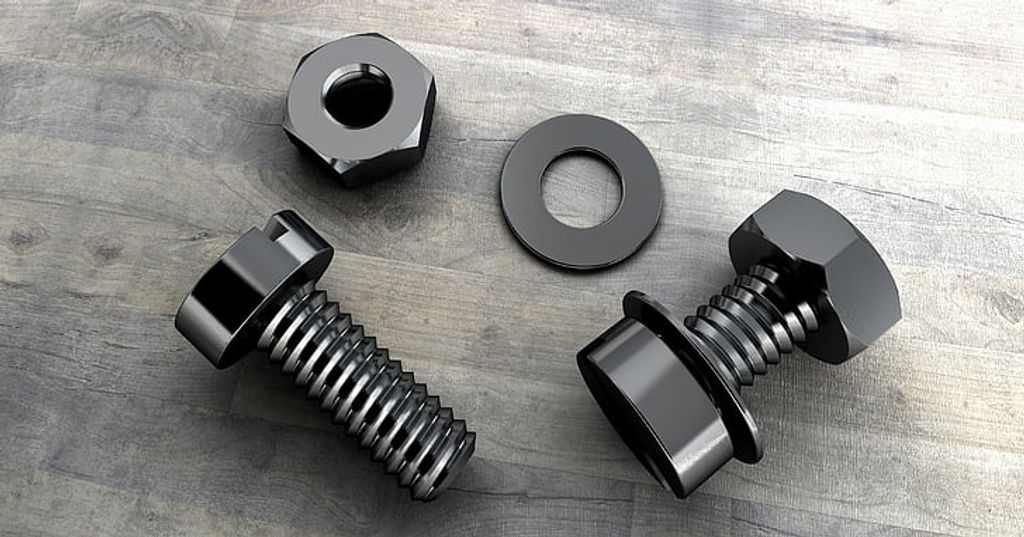“Unveiling the Trio: Nails, Screws, and Bolts Preparation”
In the world of construction and manufacturing, the use of fasteners such as nails, screws, and bolts is essential for securing and joining various materials. Understanding the basics of these fasteners, their materials, design, installation techniques, and maintenance considerations is crucial for achieving optimal results. This article will delve into the preparation and application of nails, screws, and bolts, shedding light on their roles, properties, and best practices.
Key Takeaways
- Proper sizing and fit are crucial for ensuring the compatibility and effectiveness of fasteners.
- Surface preparation is essential to optimize adhesion and longevity of the fasteners.
- Routine maintenance checks are necessary to ensure the integrity and reliability of fasteners.
- Choosing the right installation tools, whether hand tools or power tools, is key to achieving secure and efficient fastening.
- Understanding the composition and properties of different fastener materials is vital for selecting the most suitable option for specific applications.
Understanding the Basics of Fasteners

The Role of Nails in Construction
Nails are the quintessential fasteners used ubiquitously in construction for their simplicity and effectiveness. They serve as a primary method for joining pieces of wood and other materials in a variety of building projects. The strength of a nailed connection depends on the nail’s length, diameter, and the properties of the material being fastened.
Selection is key when choosing the right nail for a job. Factors such as the type of wood, the thickness of the materials, and the environmental conditions all play a role in determining the appropriate nail. Here’s a quick guide to common nail types:
- Common nails: Large, sturdy, and used for rough framing.
- Box nails: Similar to common nails but thinner, reducing the risk of splitting wood.
- Finishing nails: Small head, used for trim work where a discreet appearance is desired.
- Masonry nails: Made of hardened steel and designed to be driven into brick or concrete.
Tip: Always ensure the nail length is at least three times the thickness of the material being fastened to avoid any structural weakness.
Proper nailing technique is also crucial. Driving nails at the correct angle and depth can significantly increase the holding power and longevity of the connection. It’s a skill that, while seemingly straightforward, requires practice and understanding of the materials involved.
Screws: Versatility and Strength
Screws are the quintessential fasteners, known for their versatility and strength. They come in a myriad of types, each designed to serve a specific purpose in construction and manufacturing. From wood screws to machine screws, the variety available allows for precise application across different materials and environments.
Wood-to-wood fastening is a common use for screws, particularly in carpentry. Gypsum screws, for example, are tailored for plasterboard and provide a secure hold when building furniture or framing homes. The choice of screw is critical for the integrity of the structure, as each material interaction requires a different thread pattern and tip design.
When preparing to use screws, it’s essential to consider the material they will be fastening. Various screws are made of different materials, each with unique qualities that meet project requirements in terms of strength, resistance to corrosion, and more. Selecting the right screw for the job not only ensures a secure hold but also prolongs the lifespan of both the fastener and the materials it joins.
Tip: Always match the screw material and design to the application to avoid joint failure or material damage.
Bolts: Securing Heavy Loads
Bolts are the quintessential fasteners when it comes to securing heavy loads in construction and engineering projects. Their robust design and threading allow for a strong, lasting hold that is critical in applications where safety and stability are paramount. Unlike nails or screws, bolts are typically used in conjunction with nuts to clamp and hold together large components.
The selection of the right bolt for a job involves considering the load it must bear and the environment it will be exposed to. For instance, SmartBolts
Tip: Always verify the load specifications of a bolt before installation to ensure it can handle the intended weight without risk of failure.
Bolts come in various sizes and materials, each suited to specific tasks. It’s essential to match the bolt size and material to the load requirements and environmental conditions to prevent premature failure due to shear, tension, or corrosion.
Material Matters: Composition and Properties
Steel and Iron: Traditional Strength
Steel and iron have long been the backbone of construction and manufacturing due to their remarkable strength and durability. Steel, an alloy of iron and carbon, can contain up to 2 percent carbon, with higher contents classifying the material as cast iron. Its strength is a defining characteristic, yet it is inversely proportional to its toughness, indicating a trade-off between the two properties.
Steel’s versatility is evident in its widespread use across various industries. It is particularly favored in construction for its ability to withstand heavy loads and resist environmental stresses. The rise of steel in construction has significantly impacted civil engineering, introducing new possibilities for design and architecture.
Tip: When selecting steel for a project, consider both the strength required and the level of toughness needed to resist potential deformations.
The following table outlines the basic types and grades of steel commonly used in construction:
| Grade | Carbon Content | Typical Use |
|---|---|---|
| A36 | 0.26% | Structural |
| A572 | 0.23% | Bridge |
| A588 | 0.19% | Building |
Understanding the specific properties of each type of steel is crucial for ensuring the right match for the intended application.
Aluminum and Titanium: Lightweight Alternatives
In the realm of fasteners, aluminum and titanium stand out as lightweight alternatives to traditional steel and iron. These materials are favored for applications where weight is a critical factor, such as in aerospace and automotive industries. Aluminum fasteners are known for their excellent corrosion resistance and good strength-to-weight ratio, making them suitable for a wide range of environments.
Titanium fasteners, though more costly, offer superior strength and are remarkably resistant to corrosion. They are often used in high-performance and marine applications where durability and low weight are paramount. Both materials can be anodized to improve surface properties and add a decorative finish.
- Aluminum: Lightweight, corrosion-resistant, anodizable
- Titanium: High strength, corrosion-resistant, ideal for harsh environments
Tip: When selecting fasteners for a project, consider the environmental conditions and mechanical requirements. Lightweight metals like aluminum and titanium can significantly reduce the overall weight of a structure without compromising strength.
Coatings and Treatments for Enhanced Durability
The longevity and performance of fasteners are significantly enhanced by various coatings and treatments. These applications serve not only to protect against corrosion but also to reduce friction and wear, thereby extending the service life of the components.
-
Zinc, cadmium, and polymer coatings are among the most common options, each offering distinct advantages in terms of protection and durability. For instance, zinc is renowned for its ability to shield metal from corrosive elements, a process known as galvanization.
-
Hot-dip galvanizing is a particularly effective method where the fastener is submerged in molten zinc, forming a robust barrier. This technique is widely used for a range of fasteners, including nails, screws, and bolts.
Tip: When selecting a coating for your fasteners, consider the environment in which they will be used. Harsh conditions demand more resilient coatings to prevent premature failure.
The choice of coating should align with the specific requirements of the application, taking into account factors such as exposure to chemicals, physical stresses, and climatic conditions. Regular maintenance and inspection can further ensure the integrity of the coated fasteners over time.
Design and Manufacturing: From Concept to Reality

The Engineering Behind Fastener Design
The engineering of fasteners is a meticulous process that combines material science, mechanical engineering, and precision manufacturing. The primary goal is to create fasteners that meet specific performance criteria while being cost-effective and reliable.
Design considerations include the intended load-bearing capacity, environmental conditions, and the materials to which the fastener will be applied. Engineers must also account for the type of stress the fastener will endure, whether it be tensile, shear, or vibrational forces.
- Tensile Strength: Ability to withstand pulling forces
- Shear Strength: Resistance to sliding forces parallel to the surface
- Vibrational Resistance: Capacity to maintain integrity under cyclical loads
Tip: Always consult a fastener’s specification sheet to ensure it matches the engineering requirements of your project.
The design phase is followed by prototyping and rigorous testing to ensure that the final product can withstand real-world applications. This iterative process helps to refine the fastener design, enhancing both safety and functionality.
Cutting-Edge Manufacturing Techniques
Cutting-edge manufacturing techniques play a pivotal role in the production of high-quality fasteners. Advanced technologies such as robotics and automated systems are integrated into the manufacturing process at Norck, ensuring precision and efficiency. These technologies enable the production of fasteners with superior accuracy and consistency, meeting the stringent quality standards of the industry. Implementing a table to showcase the quantitative improvements achieved through these techniques would provide a clear demonstration of their impact on fastener production. Additionally, the use of robotics in manufacturing presents exciting opportunities for enhancing productivity and quality in the fastener industry. It’s essential to embrace these technologies to stay at the forefront of fastener manufacturing.
Quality Control in Fastener Production
The final and crucial step in the production of fasteners is quality control. This process ensures that each nail, screw, and bolt meets the stringent standards required for their intended use. Manufacturers employ a variety of testing methods to assess the mechanical properties, dimensional accuracy, and overall integrity of fasteners.
Visual inspection is often the first line of defense, where experts scrutinize the surface and structure for any irregularities. Advanced techniques, such as non-destructive testing (NDT), further examine the internal consistency without damaging the parts. For example, ultrasonic testing can detect subsurface flaws, while magnetic particle inspection reveals surface cracks.
Tip: Always verify the quality certification of fasteners, especially for critical applications.
The table below summarizes common quality tests and their purposes:
| Test Type | Purpose |
|---|---|
| Tensile Testing | Measures strength |
| Hardness Testing | Assesses material hardness |
| Torque Testing | Evaluates resistance to twisting |
| Fatigue Testing | Determines endurance limits |
Regular audits and adherence to standards such as ISO and ASTM are essential for maintaining consistency in quality. Ultimately, the goal is to deliver fasteners that perform reliably, ensuring safety and longevity in their applications.
Preparation and Pre-Installation Considerations

Sizing and Fit: Ensuring Compatibility
Selecting the correct size and fit for fasteners is a critical step in ensuring the structural integrity and longevity of any construction or assembly. Compatibility between the fastener and the materials it will join is paramount. For instance, a screw that is too large may split the wood, while one that is too small may not hold securely.
Proper sizing involves not only the length and diameter of the fastener but also the thread pitch and type. It is essential to match these dimensions with the material’s thickness and the type of load it will bear. Here is a simple list to check for sizing compatibility:
- Measure the thickness of the materials to be joined.
- Determine the optimal length of the fastener; it should be long enough to provide sufficient hold without protruding unnecessarily.
- Select the appropriate diameter that corresponds to the material’s strength and the load requirements.
- Match the thread pitch to the material’s density; finer threads for harder materials and coarser threads for softer materials.
Tip: Always refer to manufacturer guidelines or industry standards to select the correct fastener size and type for your specific application. This can prevent costly mistakes and ensure a secure, lasting connection.
Surface Preparation for Optimal Adhesion
Proper surface preparation is crucial for the adhesion of fasteners. Before installation, it’s essential to ensure that the surface is clean, dry, and free from contaminants such as oil, grease, or dust. This can often be achieved through a combination of mechanical and chemical cleaning methods.
- Mechanical cleaning may include sanding, wire brushing, or abrasive blasting to remove rust, scale, and old paint.
- Chemical cleaning involves solvents or degreasers to dissolve and remove surface contaminants.
Tip: Always wear appropriate personal protective equipment (PPE) when preparing surfaces to prevent injury from debris or exposure to harmful chemicals.
Once the surface is prepared, a primer or adhesive may be applied to further enhance the bond between the fastener and the substrate. It’s important to allow sufficient time for any primer or adhesive to cure before proceeding with installation.
Pilot Holes and Tapping: A Primer
Proper preparation of fasteners is crucial to ensure a secure and lasting fit. Pilot holes are pre-drilled to guide screws and bolts, preventing wood from splitting and metal from deforming. The size of the pilot hole is critical; too small, and the screw may not fit, too large, and the fastener may not hold effectively.
Tapping involves creating threads within a pilot hole so that a bolt can be screwed in smoothly. This process requires precision and the right tools to match the thread size and pitch of the bolt. Here’s a simple guide to tapping:
- Select the correct tap size for the bolt.
- Secure the material in a vise or clamp.
- Apply cutting fluid to reduce friction.
- Align the tap perpendicular to the hole.
- Turn the tap with steady pressure to cut threads.
- Reverse the tap occasionally to break chips.
- Clean the threads and test the bolt fit.
Tip: Always wear safety goggles when drilling or tapping to protect your eyes from metal shavings and dust.
By carefully preparing pilot holes and tapping threads, installers can ensure that fasteners are not only easier to install but also hold with maximum strength. This preparation is especially important in materials that are prone to damage or in applications where the structural integrity is paramount.
Installation Techniques and Tools

Hand Tools vs. Power Tools: Making the Right Choice
The decision between using hand tools and power tools is not just about convenience; it’s about selecting the right tool for the job, considering factors such as precision, control, and the nature of the task at hand. Hand tools, revered for their simplicity and reliability, offer a level of tactile feedback and finesse that power tools may not match, especially in delicate operations.
Power tools, on the other hand, are champions of efficiency and less physical exertion. They excel in repetitive tasks or when working with tougher materials. However, they require a source of power and can be heavier, which might influence their suitability for certain projects.
- When precision and control are paramount, hand tools are often the superior choice.
- For tasks that demand speed and power, power tools can significantly reduce the time and effort involved.
Tip: Always assess the scope and requirements of your project before choosing your tools. The right tool can make a significant difference in the quality and ease of installation.
Advanced Fastening Methods for Professionals
Professional fastening demands precision, efficiency, and reliability. Advanced fastening methods have evolved to meet the stringent requirements of modern construction and manufacturing. These methods often incorporate innovative materials and state-of-the-art technologies to ensure joints are secure and durable.
For instance, thread-locking adhesives and thread sealants are used to prevent loosening due to vibration. Self-piercing rivets and laser welding are also employed for their strength and speed of application. Professionals must be adept at selecting the right technique for the task at hand, considering factors such as material compatibility and load-bearing requirements.
Tip: Always follow the manufacturer’s guidelines for the chosen fastening method to achieve optimal results.
The table below outlines some of the advanced fastening methods and their typical applications:
| Method | Application | Advantages |
|---|---|---|
| Thread-locking Adhesives | Vibration-prone assemblies | Prevents loosening |
| Self-piercing Rivets | High-strength joins | Quick installation |
| Laser Welding | Precision metal work | Strong, clean bonds |
Continual education and hands-on experience are crucial for professionals to stay abreast of these advancements and to apply them effectively in their work.
Troubleshooting Common Installation Issues
When it comes to installing fasteners, precision is key. Even the most experienced professionals can encounter issues that require troubleshooting. Common problems include overdriving or underdriving nails or screws, which can compromise structural integrity or lead to future failures. To address these issues effectively:
- Ensure that the fastener is the correct size and type for the material.
- Adjust the tool’s pressure settings to match the fastener’s requirements.
- Check for signs of wear on the tool’s driving mechanism and replace parts as necessary.
Tip: Always test the settings on a scrap piece of material before proceeding with the actual installation to prevent damage.
Regular maintenance of tools and careful preparation of the work surface can prevent many installation problems. However, if issues do arise, a systematic approach to troubleshooting can help identify and rectify the problem quickly and efficiently.
Maintenance, Inspection, and Replacement

Routine Checks for Fastener Integrity
Regular maintenance and inspection are crucial for the longevity and safety of any construction or assembly. Routine checks for fastener integrity should be an integral part of any maintenance schedule. These checks help in identifying potential issues before they escalate into major problems.
Visual inspection is the first step in assessing the condition of nails, screws, and bolts. Look for signs of wear, such as rust or corrosion, which can compromise the strength of the fastener. It’s also important to check for any signs of movement or loosening that could indicate the fastener is no longer performing its intended function.
For a more detailed examination, consider using specialized tools to measure torque and tension. This can provide quantitative data on the fastener’s performance and whether it meets the required specifications. Here’s a simple checklist to follow during routine checks:
- Check for visible signs of damage or wear
- Ensure that fasteners are seated properly
- Measure torque and tension where applicable
- Look for any signs of environmental damage, like corrosion
Tip: Always replace fasteners with the same grade and specification to maintain structural integrity. Using a lower grade can lead to failure and potential safety hazards.
When to Tighten, Loosen, or Replace
Knowing when to tighten, loosen, or replace fasteners is crucial for maintaining the integrity and safety of structures. Regular inspections are essential to identify any signs of wear, corrosion, or loosening. Here are some key considerations:
- Tighten: Regularly check the fasteners for any signs of loosening and tighten them as needed to ensure structural stability.
- Loosen: Avoid overtightening, especially with wood screws, to prevent damage to the material. Inspect the hole for debris before tightening.
- Replace: When fasteners show signs of wear, corrosion, or damage, it’s important to replace them promptly to maintain structural integrity.
Remember, proper maintenance and timely action can prevent costly repairs and ensure the longevity of the structure.
Dealing with Corrosion and Wear
When dealing with corrosion and wear, it’s crucial to implement preventive measures to prolong the lifespan of fasteners. Regular cleaning and lubrication are essential for maintaining the integrity of the fastening components. Additionally, proper storage and periodic inspections are key to identifying and addressing potential issues before they escalate. Remember, a proactive approach to maintenance can save time and resources in the long run.
When it comes to nail care, maintenance, inspection, and replacement are essential aspects to keep your nails healthy and beautiful. At NAILinspire.com, we provide the ultimate online nail art design library with a wide range of tutorials, tips, and inspiration to help you achieve stunning nail designs. Visit our website today to explore the latest trends and unleash your creativity!
Frequently Asked Questions
What are the main differences between nails, screws, and bolts?
Nails are typically used for light-duty applications and are driven into materials, screws provide a stronger and more versatile fastening option, and bolts are used for heavy-duty applications and require nuts for installation.
What materials are commonly used in the production of fasteners?
Steel, iron, aluminum, and titanium are commonly used materials for fasteners, each offering unique properties and advantages based on the specific application requirements.
How can I ensure proper sizing and fit for fasteners?
Proper sizing and fit can be ensured by following manufacturer specifications, considering material thickness, and using appropriate sizing tools to determine the correct fastener dimensions.
What are the recommended surface preparation techniques for optimal fastener adhesion?
Surface preparation techniques include cleaning, degreasing, and roughening the surface to ensure proper adhesion and minimize the risk of fastener loosening or failure.
When should I use pilot holes and tapping for fastener installation?
Pilot holes and tapping are essential for preventing material splitting, ensuring proper thread engagement, and facilitating the installation of fasteners in harder materials.
What are some common maintenance practices for fasteners?
Routine checks for integrity, proper tightening, and addressing corrosion and wear are common maintenance practices to ensure the longevity and reliability of fasteners.







